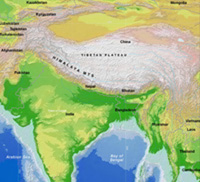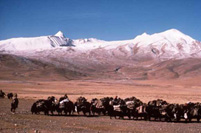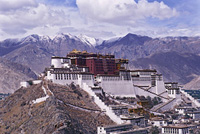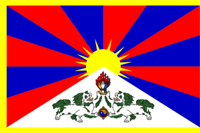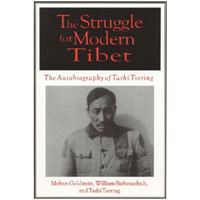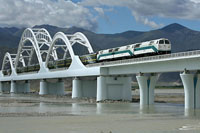
Jochen Welsch
Wachusett Regional High School
Tibet in the AP World History Framework
I have taught AP World History for six years. If you teach this course, you've experienced how challenging it is to explore 60,000+ years of history in less than eight months. My students have found it useful to review prior to the exam by using a single country or region as a microcosm for world history. This helps them gain understanding into the themes that define each of the six periods used in AP World History and gives them one country's facts to draw on as evidence for comparative purposes.
Participating in this NEH institute on the Himalayan Region has refined my understanding of the peoples and cultures of this important but often neglected or misunderstood part of the world. Exploring the history of Tibet in particular will help me explain the major themes of this class including human interaction with the environment, cross cultural encounters, state building and basic economic structures. In addition the knowledge gained about this region has created a framework for me to reinforce the concept of change and continuity in world history. While Tibet's history his often been presented as static, this remote mountainous region has been and continues to be dynamic. To help students understand the flow of history I have created a series of powerpoints that correspond with each of the six periods used in the AP World History framework. Although Tibet's historical development may not precisely match the bookend dates of each period, its history does generally match with the overall theme of each period in world history. I have included a list of resources for further reading and extension activities that can be incorporated into the classroom. Finally, this project concludes with a powerpoint dealing with sustainable development and the future of Tibetan pastoralism in an increasingly globalized world.
Using this website:
Click on each image to view the page that describes each era and its relationship to Tibet.
Click on the title under each picture to access the powerpoint that explores Tibet's history during that period.
In each page, click on each resource for a description of the source and/or lesson plans.
Thanks to the NEH for funding this institute. It will help my teaching. Thanks as well to Drs. Lewis and van der Kjuipp who organized the institute, the College of the Holy Cross for hosting, all the Holy Cross staff who helped us in countless ways, the visiting scholars who taught us, and my fellow participants who helped me refine my project and made this institute an engaging and worthwhile endeavor.
 This site was created by Jochen Welsch at the NEH Summer Institute "Literatures, Religions, and Arts of the Himalayan Region," held at the College of the Holy Cross, Summer 2008.
This site was created by Jochen Welsch at the NEH Summer Institute "Literatures, Religions, and Arts of the Himalayan Region," held at the College of the Holy Cross, Summer 2008.